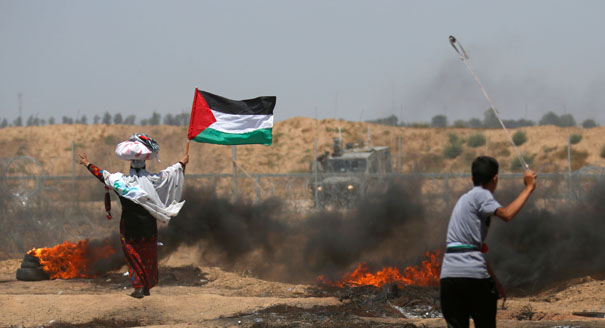Ali Jarbawi | Professor at Birzeit University in the West Bank, former minister of planning and administrative development and former minister of higher education in the Palestinian Authority
It all depends on the shifting politics and positions of all parties concerned, bearing in mind that neither Egypt nor Israel wants to incorporate Gaza and carry its “burden.” So Gaza’s future comes from delinking the territory from both states.
With this premise in mind, only two options remain—one minimal the other optimal. Either Gaza will become a mini independent Palestinian state on its own, with a high, but not full, degree of sovereignty. That would mean that the West Bank is swallowed by Israel. Or Gaza will become part of a Palestinian state that is composed of two areas (Gaza and the West bank) that have different levels of sovereignty. The “leftovers” of the West Bank would have an “autonomous status,” linked to an independent and highly sovereign Gaza. In either case Gaza in the coming ten years is heading toward independence.
Norman G. Finkelstein | Author, most recently, of Gaza: An Inquest Into Its Martyrdom (University of California Press)
Gaza’s modern history begins in 1948 with the massive influx of expellees from the state of Israel. In 1967, Gaza came under brutal Israeli occupation. Israel alleges it withdrew from Gaza in 2005, but the consensus among legal specialists is that it remains the occupying power. In 2006, after Hamas won “completely honest and fair elections,” according to former U.S. president Jimmy Carter, Israel imposed a medieval-like blockade. In the interim, Israel has visited not fewer than eight “operations” on Gaza since 2004. After the last massacre in 2014, Operation Protective Edge, the president of the International Committee of the Red Cross, Peter Maurer, went to Gaza and observed, “I’ve never seen such massive destruction … before.”
United Nations agencies have pronounced Gaza “unlivable.” The UN humanitarian coordinator for Gaza, Robert Piper, observed last year, “I see this extraordinarily inhuman and unjust process of strangling gradually 2 million civilians that really pose a threat to nobody.” Sara Roy of Harvard University’s Center for Middle Eastern Studies has observed that “innocent human beings, most of them young, are slowly being poisoned by the water they drink, and likely by the soil in which they plant.” It is predicted that Gaza will soon be overrun by typhoid and cholera epidemics.
On March 30, Gazans initiated weekly demonstrations to break the illegal siege. Human rights groups have reported that the marches are overwhelmingly peaceful. But more than 110 Gazans have been killed and more than 3,700 injured by Israeli snipers. “Israeli forces’ repeated use of lethal force in the Gaza Strip since March 30, 2018, against Palestinian demonstrators who posed no imminent threat to life, may amount to war crimes,” Human Rights Watch concluded.
A 2015 UN report by New York State judge Mary McGowan Davis called on Israel to lift the blockade “immediately and unconditionally,” while the European Parliament in 2018 called for an “immediate and unconditional end to the blockade.” If the international community fails to act before it’s too late, the judgment of history will not be kind. Will it one day be asked, Why was the world silent when Gaza was crucified? It’s impossible to predict Gaza’s future except to say that unless the international community acts now, it won’t have one.
Donald Macintyre | Former Jerusalem correspondent for the Independent newspaper and author of Gaza: Preparing for Dawn (Oneworld Publications)
What’s the alternative to Gazan despair after a decade of imprisonment, record unemployment, dire economic, energy, and water poverty, a schism between Hamas and Fatah, and three devastating Israeli military assaults? Through a just—but in the next decade highly unlikely—Israeli-Palestinian peace agreement, the territory would reemerge as a vibrant maritime entrepot, a manufacturing, fish, and agricultural exporter, self-sufficient in energy from as yet undeveloped offshore natural gas, and a regional tourist hub. Meanwhile, simply lifting the eleven-year Israeli (and Egyptian) blockade would produce 32 percent economic growth by 2025, according to a World Bank report asserting an “unarguable” link between such an economic revival and Israeli security—let alone Palestinian dignity.
Without that (as well as major infrastructure renewal), Gazans face continued per capita negative growth, an increasingly uninhabitable territory, and ongoing border unrest. This will lead to probable further warfare, with Palestinian death tolls even greater than in 2014, during Operation Protective Edge.
Mohannad Sabry | Egyptian journalist and author of Sinai: Egypt’s Linchpin, Gaza’s Lifeline, Israel’s Nightmare
The very near future will bring unprecedented changes to the Gaza Strip, changes that will be decided not by the people of Gaza, through their free will, but rather by the major regional and international players now drawing what seems to be the map of a new Middle East.
Egypt’s President Abdel-Fattah al-Sisi, Israel’s Prime Minister Benjamin Netanyahu, the United Arab Emirates’ Mohammed bin Zayed, and Saudi Arabia’s Mohammed bin Salman leave us with no option but to believe that they intend to impose their vision of a Palestinian state on Palestinians and everyone else, a state that will include Gaza as we know it and a portion of the Sinai Peninsula that Sisi’s military has already evacuated using lethal force. Gaza’s only options are to accept what is now known as the “deal of the century,” or face another Israeli military action that will destroy the entire territory once and for all.
The outcome of the coming months will decide the next decade for Gaza. It will either be a decade of suffering, death, and destruction, or one of humiliation and submission to the will of powerful dictatorial regimes that continue to plan and perpetuate a seemingly unending Arab winter.








